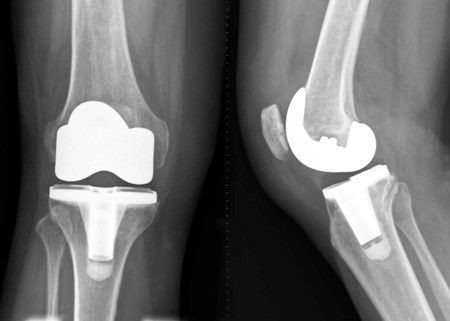An early study by the University of Alabama at Birmingham has discovered that nanodiamonds used for reinforcing synthetic joints are also capable of preventing the inflammation due to the release of metal waste into the body caused by hardworking metal joints.
 Since the number of knee and hip joint replacements grows, nanodiamond coatings may answer issues related to metal surfaces.
Since the number of knee and hip joint replacements grows, nanodiamond coatings may answer issues related to metal surfaces.
The study results ensure the safety of nanodiamonds for using in implants. The research team has reported its study in Acta Biomaterialia journal. It is studying the efficacy of nanodiamond coating in reducing wear on metal alloy joints. Debris released by joint wear restricts mobility and causes pain and finally results in joint failure.
According to earlier studies, nanodimonds release less debris with tiny particles. Based on the interaction between scavenging immune cells called macrophages and nanodiamonds in a dish, the research team suggests that the typical concentration and size of wear debris may not cause either toxicity or inflammation. The macrophages that swallow tiny nanodiamonds secrete fewer amounts of inflammatory chemicals, thus activating only fewer adverse genes.
In the current study, the research team exposed the macrophages to artificial nanodiamonds of different sizes and concentrations. According to the study results, concentrations of nanodiamonds below 50 µg/mL were not lethal to macrophages, which remained active and metabolize energy irrespective of particle size. However, the capability of macrophages slumped by up to 50% irrespective of particle size when the concentration exceeded 200 µg/mL. Moreover, exposure to nanodiamonds drastically decreased expression of numerous genes responsible for inflammation and subsequent bone loss.
Yogesh Vohra, one of the researchers, stated that the decreased particle size and wear volume anticipated for diamond articulation will denote a significant advance over traditional orthopedic bearings. According to Namasivayam Ambalavanan, one of the researchers, this study provides the input to carry on further nano-toxicological study of nanodiamond particles.